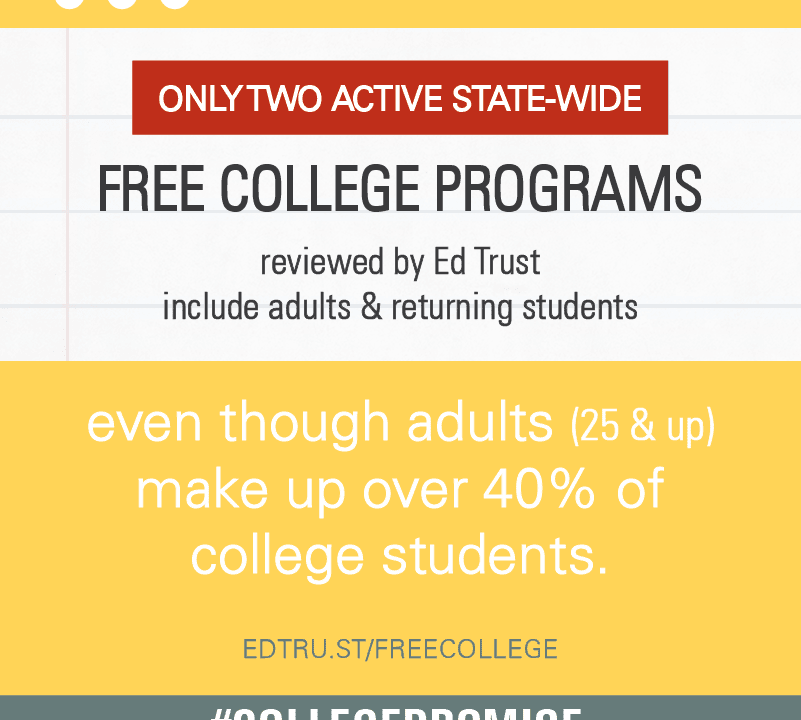A Promise Fulfilled
A Framework for Equitable Free College Programs
Each fall, millions of college students across the country start classes in hopes of earning their degree. However, the weight of steep tuition bills, rent, groceries, books, and other costs looming over their heads can often cut that dream short. The latest popular solution to help more students afford a degree, which is supported by policymakers and advocates alike, is “free college.”
But while “free college” sounds good at first, we need to ask, “Does this benefit students from low-income families who need it the most?” Unfortunately, right now the answer is “No. Not unless they are designed around equity.”
Additional Resources on Free College Programs
The State of Free College: Tennessee Promise and New York’s Excelsior Scholarship
Designing Sustainable Funding for College Promise Initiatives
The Future of Statewide Free College Programs
College Promise Programs Database (Penn Graduate School of Education)
College Promise Programs Database (College Promise Campaign)
A Promise Fulfilled: A Framework for Equitable Free College Programs reviews proposed and existing free college or “college promise” programs, as of 2017, and finds that free college is not inherently equitable.
“After decades of underinvestment at the state level, free college could be the next big thing in higher education. Free college, if designed thoughtfully, could be as pivotal to accessing a college education as the Pell Grant or the GI Bill. Unfortunately, at this moment, too many states are racking up political support among upper- and middle-class voters while excluding students from low-income families in their plans.”
– Tiffany Jones, Ph.D, higher education policy director
We examined 15 existing statewide programs and 16 proposed programs, through 2017, using an eight-part equity rubric and found that not a single program meets all eight criteria. On average, programs met only half of the equity criteria.
“The biggest problem we see is that many of the free college programs at the two-year level use a ‘last-dollar’ model, meaning that they only cover tuition after other aid has been applied. Students from low-income families attending community colleges can typically afford tuition with help of the Pell Grant, so they don’t benefit from statewide free college programs designed to cover only the cost of tuition. However, these students still cannot afford college because they struggle with non-tuition costs, such as books, housing, and transportation.”
– Katie Berger, senior higher education policy analyst
If states want to truly offer free college to all students, they need to expand these programs with students from low-income families in mind. Ed Trust stands ready to help policymakers better design free college programs and to help advocates push for equity-driven policies.
Use the map to explore more information on the 31 existing and proposed programs we examined.

Free College: A Promise Fulfilled
* Analyzed programs were proposed or in effect as of 2017.
**Click here for a detailed description of each of the 8 Equity Criteria.



